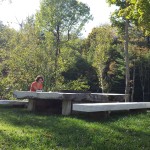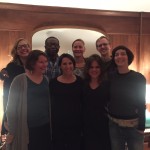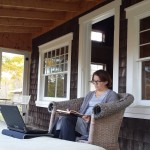A very specialized sub-genre of blog post is the author’s story of how she got her agent. I never told my story, and then it turned out my story was still in process, so it’s a good thing I waited.
Let me say at the start that I desperately wanted to get an agent via the slush pile. I wanted this because I was disheartened by the many stories I read that included phrases like “my cousin’s friend” or “I was seated next to X at a wedding” or “after ten years at such-and-such publisher.” It seemed that nearly every account I read described an author finding an agent through a contact or a special circumstance. I wanted my story to offer hope to aspiring authors who don’t have contacts or special circumstances.
I queried and queried. I met agents at my regional SCBWI conference and had great conversations with them. I queried them afterwards. I was rejected and rejected and rejected. Or, rather, because so many agencies follow a no-response protocol, most of my queries were met with deafening silence. Sometimes I got requests for partials or fulls. Some of those requests were followed by encouraging rejections. Some languished with no response. This should all sound familiar to anyone who has ever entered into the query fray.
The unique part of my experience was that I had an offer from a foreign publisher, and I needed an agent to negotiate the contract. This was great, of course, but it was also highly unusual. Foreign rights are supposed to come after domestic publication, not before. In any case, I didn’t just want an agent; I needed an agent in order to negotiate this foreign contract. I grew increasingly desperate.
I decided that if most people got their agents through contacts, I needed to be creative in activating my networks. I attended Carleton College, a liberal arts college in Minnesota with fiercely loyal alumni, and I thought, “Surely, someone who went to Carleton is a literary agent.” I searched the alumni directory, and discovered George Nicholson, one of the most respected children’s agents in the business, graduated from Carleton.
I emailed him. It wasn’t exactly a query. It was more a request for guidance about the peculiar situation of the foreign contract. He responded within five minutes, inviting me to send him my manuscript. A couple of months later, I met George for lunch. It was the first of several conversations that would deepen my knowledge of the history and current state of children’s publishing. It ended with an offer of representation.
George negotiated the contract for La Finestra del Temps (Barcelona: Cruïlla 2012) and sought an American home for the book. Meanwhile, I wrote The Rosemary Spell. When it was ready, I sent it to George, and he immediately suggested setting the Catalan book aside and shifting our efforts to my new book. He sent it to Dinah Stevenson at Clarion Books. She loved it. We signed a contract.
And that’s the story I would have told if I’d gotten around to telling my agent story, but it turned out to be only the first part of the story.
In February 2015, just before I got to see the beautiful cover Clarion designed for The Rosemary Spell, George unexpectedly passed away. He touched so many lives and so many stories, and his death was a terrible loss for children’s publishing. My relationship with him was brief compared to those who had worked with him for thirty or forty years, and I feel privileged to have been taken under his wing even for a short time. It is an extra sadness to me that he never got to see The Rosemary Spell in its beautiful, finished form.
After George died, I held off on looking for a new agent, largely because I didn’t yet have a new manuscript that was ready to share. Time passed. I wrote. I revised. When the time was right, I began to send out queries.
I thought it would be different this time around. I am a published author. My debut novel has been well received—it got a starred review in Publisher’s Weekly. I have contacts in the industry.
Though my query letter was somewhat different, the process turned out to be much the same. My contacts were kind and generous with their time, but they did not lead me to offers of representation. It turns out there is no secret hand shake that allows published authors to bypass the query quagmire. I sent out queries. I got some requests for material, some rejections, and, as before, lots of silence. I was wrong to presume that my network and my special circumstances would lead me to an agent.
In the end, I rose up from the slush pile, just as I’d hoped to do at the start. A friend suggested Bridget Smith at Dunham Literary might be a good match for me, and when I looked her up, I agreed. But I didn’t have any special in. I just sent a query, following the agency guidelines. And I waited. She asked to see the full manuscript. I allowed myself to feel hopeful. Even before we spoke, the relationship felt promising.
And then we arranged a time to talk. The conversation was comfortable, productive, and inspiring, and it ended with her offering to represent me. I followed the protocol of contacting the other agents who were considering the manuscript, but I knew Bridget was the right match for me. It gave me great joy to accept her offer, and as I work with her comments on my manuscript, I can already see how she will help me to be a better writer.
So that’s my story.









